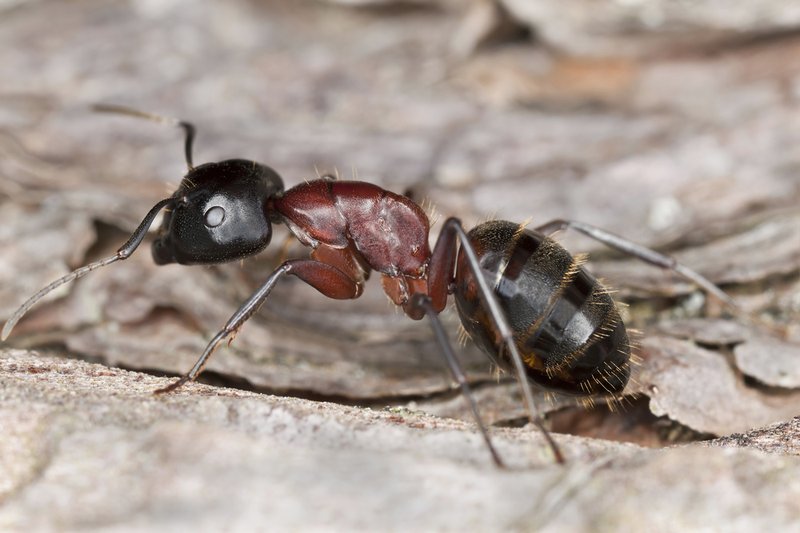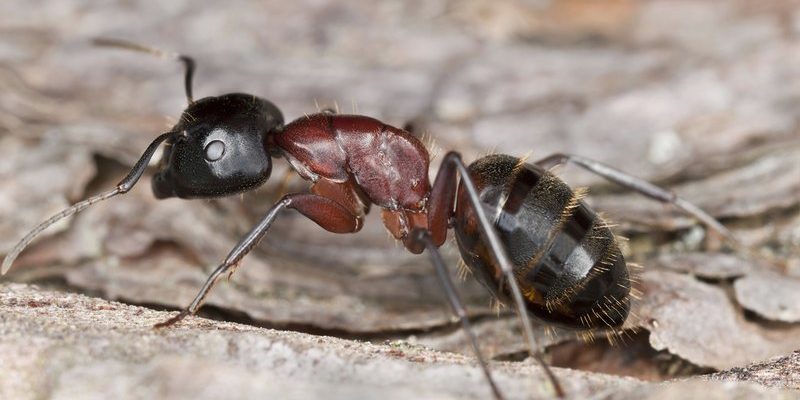
Carpenter ants are like tiny contractors that help break down and recycle dead and decaying wood, which ultimately supports forest health and biodiversity. Think of them as nature’s clean-up crew! In this article, we’ll dive into their unique role in ecosystems, what makes them different from other ants, and why they matter so much. So, grab a cup of coffee, and let’s explore the world of carpenter ants together!
What Are Carpenter Ants?
Carpenter ants belong to the genus *Camponotus* and are known for their impressive size and black or bicolored appearance. These ants can range from 1/4 inch to over 1 inch long, depending on the species. Unlike termites, which consume wood, carpenter ants dig into it to create their nests. They prefer moist, decaying wood, making them a key player in breaking down dead trees and enhancing soil quality.
You might be wondering why they are called carpenter ants specifically. Well, it’s because of their nesting behavior. Instead of creating mounds in the soil like some ant species, carpenter ants excavate tunnels and galleries inside wood. This not only provides them with a home but also offers shelter to various organisms. Think of it as a tiny apartment complex built right inside a tree!
The Benefits of Carpenter Ants in Ecosystems
Carpenter ants have a pretty impressive résumé when it comes to contributing to ecosystems. For starters, their wood-excavating habits play a significant role in decomposition. By breaking down dead trees, they help recycle nutrients back into the soil. This process is vital for forest health because it allows other plants to thrive, promoting biodiversity.
Moreover, carpenter ants aren’t just solitary creatures; they also contribute to the larger food web. Birds, small mammals, and other predators rely on them as a food source. This creates a balance within the ecosystem, where different species are interdependent. Without carpenter ants, the food chain might shift, potentially harming other wildlife.
How Carpenter Ants Build Their Nests
Let’s take a closer look at how carpenter ants create their nests. After choosing a suitable piece of wood, usually a dead or decaying tree, they start digging. Using their strong mandibles, they carve out intricate tunnels and chambers. This process isn’t quick; it can take weeks or even months to establish a solid nest.
Once the nest is in place, carpenter ants will often expand it, utilizing various wood sources. Interestingly, they prefer wood that’s already been softened by fungi or water. This means they usually do their best work where decay is already happening. They don’t just build any old tunnels—they create a network that can house thousands of ants, including their queen and her brood!
The Role of Carpenter Ants in Soil Health
So, why should we care about these little builders? Well, as they break down wood, carpenter ants also contribute to soil health. The decomposed material enriches the soil with essential nutrients, which in turn fosters plant growth. Think of it as nature’s way of ensuring that forests and ecosystems remain vibrant and healthy.
Additionally, the tunnels created by carpenter ants aerate the soil. This helps improve water drainage and root penetration for plants. When soil is well-aerated, it supports a diverse range of organisms, from fungi to earthworms. Ultimately, this interconnected web of life benefits the entire ecosystem.
Common Misconceptions About Carpenter Ants
Carpenter ants often get a bad rap, and there are a few misconceptions that we should clear up. First, many people confuse them with termites due to their wood-damaging habits. While both insects can cause damage, the way they do it is different. Termites eat wood, while carpenter ants simply tunnel through it to create nests.
Another common myth is that carpenter ants only invade homes. While they do occasionally seek shelter inside buildings, particularly during nesting season, they primarily thrive outdoors. Their primary goal is to build nests in damp, decaying wood, not to wreak havoc in your living room. Understanding this behavior can help you appreciate their ecological role rather than view them solely as pests.
How to Manage Carpenter Ants Around Your Home
If you find carpenter ants around your home, it’s natural to be concerned. However, managing them doesn’t always mean extermination. Here are some practical steps you can take:
- Inspect your home: Check for damp or decaying wood. Address any leaks or moisture issues.
- Seal entry points: Carpenter ants look for ways inside. Make sure windows and doors are properly sealed.
- Remove food sources: Keep your kitchen clean and free from food debris. This will make your home less inviting.
- Consult professionals: If you notice a significant infestation, consider contacting pest control for safe and effective removal.
By following these steps, you can maintain a healthy living environment while respecting the vital role these ants play in our ecosystem.
Carpenter ants might be small, but they have a big job in our ecosystems. From breaking down dead wood to improving soil health, they contribute to the balance of nature in remarkable ways. Remember, these industrious insects are not just pests; they’re essential players in maintaining biodiversity and forest vitality.
Next time you see a carpenter ant, maybe take a moment to appreciate the work they’re doing behind the scenes. They’re nature’s builders, and their role is crucial for the health of our environment. So, let’s respect them and the hard work they do!

